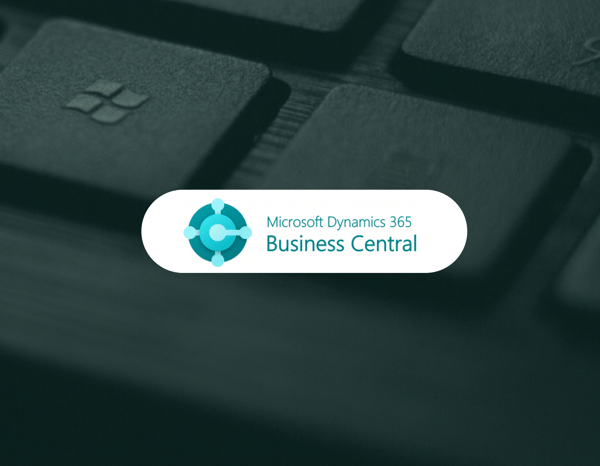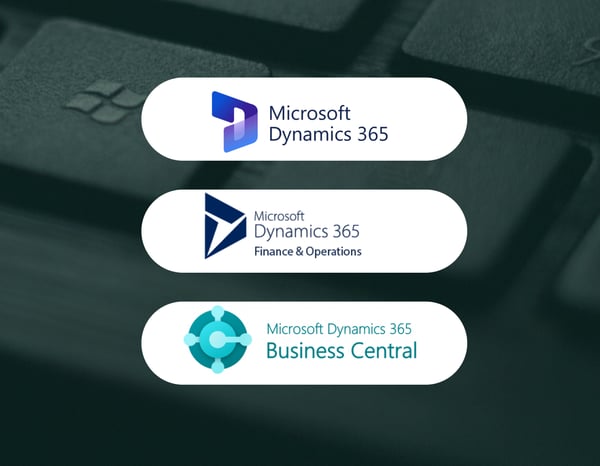

Are you aware that 82% of Accounts Payable (AP) teams still manually enter invoices into their accounting systems? A recent study by the Institute of Financial Operations & Leadership confirms it.
However, there’s good news on the horizon. The global market for AP automation is projected to soar, reaching $17.05 billion by 2032. This growth signals a shift as more companies recognize the value of automation in simplifying AP processes, reducing errors, and improving efficiency.
So, what really is AP automation and how does it work? This Rillion article explains and helps you discover the best AP automation solutions for midsize businesses to streamline your processes and improve efficiency.
What is AP automation?
AP automation involves using technology to simplify the accounts payable process for businesses. AP software automatically handles routine activities like invoice data entry, approval routing, purchase order matching, and payment schedules.
This automation reduces the manual work, allowing AP teams to focus on higher-value tasks. One term you may not be familiar with is “touchless processing” and it applies here. It means AP automation allows for the complete management of the invoice lifecycle—from receipt to payment—without any human intervention. Invoices can be received, processed, approved, and paid automatically.
Overall, AP automation brings speed, accuracy, and control to the accounts payable process. By reducing manual tasks and errors, businesses can manage their cash flow more effectively and strengthen vendor relationships.
Challenges with manual accounts payable
- Time-consuming data entry: AP departments yet to adopt AP automation spend about 50% of their time collecting invoices and paying suppliers. This manual process often involves sifting through paperwork, entering data into accounting systems, and ensuring accuracy, all of which can be tedious and time-consuming.
- Payment delays: Manual accounts payable processes can cause major payment delays. Invoices can get lost or stuck in long approval processes, making it hard for businesses to pay on time. These delays can result in late fees, strained vendor relationships, and missed opportunities for early payment discounts.
- Complex approval process: The manual approval process can be slow and frustrating. It usually involves a lot of back-and-forth communication with different people, which can cause delays in payments. This complicated process can also lead to missed or held-up invoices.
- Lack of visibility and tracking: Without automation, tracking invoice status becomes cumbersome. AP teams may struggle to know where each invoice stands in the approval process, resulting in confusion and uncertainty. This lack of visibility can also hinder effective cash flow management.
- Risk of fraud: Manual processes are more vulnerable to fraud. Without automated checks and balances, it’s easier for unauthorized payments to slip through the cracks. This can lead to significant financial losses and create compliance issues for the business, as it becomes challenging to track and verify every transaction effectively.
Using cloud-based AP automation solutions, businesses can significantly reduce the time spent on manual tasks.
How does AP automation work?
AP automation has a flow. Let’s look at the key steps involved in this automated process.
1. Invoice capture
When you receive invoices, the automation software captures the data using techniques like Optical Character Recognition (OCR). This technology scans the invoice and extracts important information like vendor details, invoice numbers, and amounts.
2. Matching and verification
Next, the software checks the extracted data to make sure it’s correct and complete. It compares the invoice details with purchase orders and other records to ensure everything matches. If it finds any differences, the system highlights them for review.

3. Approval workflow
Once all data matches, the invoices enter an automated approval workflow. This means the invoice is sent to the appropriate team members for approval based on predefined rules, such as department budgets or spending limits. Notifications and reminders can also be set to ensure timely approvals.
4. Payment implementation
After the invoice is approved, the software schedules the payment. It can integrate with payment systems to automate the transfer of funds to the vendor. The system can also track payment dates to help you take advantage of early payment discounts.
5. Reconciliation and reporting
Finally, the AP tool reconciles payment transactions and bank statements to ensure there are no discrepancies in amounts and beneficiaries. The AP software also generates reports that provide insights into metrics like spending patterns, outstanding invoices, and supplier performance.

Who is AP automation for?
AP automation is beneficial for a wide range of organizations, regardless of size or industry. Here are key groups that can particularly benefit from implementing AP automation:
- Small to medium-sized enterprises (SMEs): SMEs often face resource constraints. Automating AP processes can help streamline operations, reduce manual workload, and minimize errors, allowing these businesses to focus on growth without needing to expand their workforce.
- Large enterprises: Large organizations typically handle a high volume of invoices and complex workflows. AP automation enables them to manage this complexity efficiently, ensuring timely payments and compliance while enhancing visibility across the AP process.
- Finance and accounting teams: AP automation is designed for finance and accounting professionals who seek to improve accuracy and efficiency in their daily operations. Automation helps reduce repetitive tasks, allowing teams to focus on strategic financial management and analysis.
- Industries with high transaction volumes: Industries such as manufacturing, retail, and healthcare, which often process large numbers of invoices, can greatly benefit from automation. By reducing processing times and errors, these organizations can enhance their cash flow management.
- Organizations with remote or distributed teams: Companies that operate remotely or have multiple locations can utilize AP automation to ensure consistent processes across all sites. Automation provides centralized access to documents and workflows, facilitating collaboration and oversight.
Some key sectors that can greatly benefit from AP automation are healthcare, manufacturing, hospitality, retail, and professional services.
Benefits of AP automation
There’s been quite a buzz around accounts payable automation lately, and one question keeps coming up: “Why AP automation?” Let’s find out some accounts payable automation benefits.
Improved accuracy
Accounts payable automation reduces errors. By choosing the right AP automation solutions, you can improve accuracy and compliance, minimizing the need for manual data entry. Automated systems ensure that invoice details are accurately recorded and matched. Automation also flags any inconsistencies for review, allowing teams to address issues before they get out of hand.
Enhanced cash flow management
With features like payment scheduling and early payment discounts, AP automation helps you manage your cash flow more effectively. It lets you plan your payments, so you always have enough money when bills are due.
By automating payment processes, you can take advantage of discounts for early payments, which can lead to significant savings over time.
Faster approval cycles
Automated AP workflows speed up the approval process by automatically sending invoices to the right people based on specific rules you set up. Invoices can be routed to the correct department or manager without needing manual intervention.
This system makes sure that approvals happen on time, which helps to keep payments flowing smoothly to suppliers.
Improved security
AP automation provides enhanced security features to protect sensitive financial information. User permissions allow you to control who can access specific functions and data within the system.
Also, automated systems maintain audit trails that track every action taken, providing transparency. These measures significantly reduce the risk of fraud and unauthorized access, creating a safer environment for managing accounts payable.
Better visibility and insights
AP automation provides better visibility into your financial processes. With real-time tracking and reporting, you can easily monitor invoices and payments, giving you a clear picture of your cash flow. This transparency allows you to spot trends, understand spending patterns, and make informed financial decisions.
Debunking AP automation myths
Despite the promising trends in AP automation, many businesses remain hesitant to adopt it. This reluctance often comes from common myths and misconceptions about what AP automation involves. Let’s examine some of these myths.
Myth 1: AP automation is only for large companies
Many believe that only large enterprises can benefit from AP automation due to their high transaction volumes. In reality, businesses of all sizes can take advantage of AP automation. Small and medium-sized enterprises (SMEs) can also simplify their operations, reduce manual work, and save money, making AP automation accessible and beneficial for everyone.
Myth 2: AP automation is too expensive
Some organizations think that implementing AP automation requires a large upfront investment. While upfront costs may be associated with implementing an automated system, the long-term savings and efficiency gains of AP automation often outweigh the initial investment. These costs can be quickly offset by reduced labor expenses, fewer errors, and faster invoice processing.
Myth 3: AP automation leads to job losses
Automation is designed to handle repetitive tasks, allowing AP teams to focus on more strategic activities that require human judgment and creativity. So, instead of taking away jobs, AP automation actually helps team members do their jobs better.
It allows them to focus on more important tasks, like analyzing data, improving vendor relationships, and driving process improvements.
Myth 4: AP automation is complicated and difficult to implement
While implementing any new technology can seem daunting, modern AP automation solutions are designed to be user-friendly and easy to integrate. Many providers offer support during the transition and provide training resources to help teams adapt quickly.
Myth 5: All AP automation solutions are the same
Various AP automation solutions are available, each with different features, capabilities, and levels of complexity, so one size doesn’t fit all. That’s why it’s essential to assess your unique needs and choose a solution that aligns with your specific requirements.
Myth 6: AP automation requires extensive IT support
Most modern AP automation solutions are user-friendly and can be implemented with little IT help. Many vendors also offer support during the setup process, making it easier for finance teams to transition to the new system.
Myth 7: Once accounts payable is automated, there’s no need for human oversight
While automation handles many tasks, human oversight is still essential. Finance teams still need to review exceptions, analyze data, and make strategic decisions based on the insights generated by the automated system.
Top tasks to automate in accounts payable
Data entry
Instead of manually inputting data, let an AP tool handle this task automatically. By using Optical Character Recognition (OCR) technology, the software can scan invoices and extract essential information like vendor names, invoice numbers, and amounts. With this, you not only speed up the process but also minimize errors that can occur with manual entry.
Invoice matching
Bid farewell to digging through piles of paperwork to compare invoices with purchase orders and receipts. AP automation optimizes the matching process. This ensures everything aligns correctly, cutting down on the chances of errors and speeding up the approval process.
Approval workflows
Set up automated approval workflows that route invoices to the right team members based on predefined rules. With everyone receiving invoices relevant to their department or role, there’s less confusion about who needs to approve what.
Reconciliation
Automating the reconciliation of accounts ensures that your records in the accounting system match your bank statements. This process helps spot any discrepancies quickly, allowing you to address issues before they become bigger problems.
Reporting and analytics
Use AP automation software to generate financial reports and insights. This helps you track spending patterns, monitor cash flow, and identify areas for improvement. With real-time data at your fingertips, you can make informed decisions that enhance your financial strategy.
Questions to ask before automating AP
1. What are our current pain points?
Identify the specific challenges your team faces with manual AP processes, such as delays, errors, or inefficiencies. This will help you understand which areas need the most improvement and guide your decision on the right automation solution.
2. What are our goals for automation?
Based on your pain points analysis, define what you hope to achieve with automation. Consider specific objectives like reducing processing time, improving accuracy, or enhancing cash flow management. By clearly outlining these goals, it becomes easier to track progress and measure success.
3. How will automation fit into our existing workflow?
Assess how the new system will integrate with your current processes and software, such as ERP or accounting systems. This will help ensure that data flows smoothly between platforms. It will also enable your team to access information easily and maintain accurate records without having to switch between multiple systems.
4. What is our budget for AP automation?
Consider the initial investment and ongoing costs associated with implementing and maintaining automation software. Evaluating these expenses will help you understand the total cost of ownership and ensure that the investment aligns with your organization’s financial goals.
5. How will we train our team?
This question is essential as planning for team training and support is crucial for a smooth transition to AP automation. Ensuring everyone is comfortable with the new tools will lead to better adoption and minimize disruptions during the changeover.
6. How will we measure success?
Establish key performance indicators (KPIs) to track the effectiveness of the automation solution and its impact on your AP processes. With this, you can measure success and determine whether the automation is meeting your initial goals.
7. What is the timeline for implementation?
Consider the steps involved in implementing the AP automation solution and set a realistic timeline for each phase. This should include planning, system integration, testing, and training your team. A clear timeline ensures that the implementation stays on track and aligns with your business needs.
How to choose the right AP automation solution
Look for key features that meet your needs
Make sure the solution you’re considering offers essential features, including those that meet your specific needs. For example, if your team struggles with high volumes of invoices, look for tools that offer automated data capture and batch processing.
If approval delays are an issue, prioritize solutions with customizable approval workflows that simplify the process and reduce bottlenecks.
Select a tool that offers smooth integration
Choose a tool that integrates seamlessly with your existing software, such as your enterprise resource planning (ERP) or accounting systems. This will optimize data flow and reduce the need for manual entry, making the transition smoother for your team.
Choose a scalable software
Consider whether the solution can grow with your business. As your company expands, you may need additional features or increased capacity. A scalable solution will adapt to your growing needs without requiring a complete replacement.
Consider user experience
The tool you choose should be user-friendly for your team members. A straightforward interface can reduce the learning curve and encourage adoption across your organization. Look for software with good reviews regarding usability and customer support.
Pay attention to vendor reputation
Look into different vendors and check what customers say about them. Find case studies or testimonials that show how well their solution works. Choosing a trustworthy vendor with good customer support is important for a smooth setup and help in the future.
Count the costs
Assess both the initial investment and ongoing costs of the automation solution. Compare pricing models, including subscription fees and any additional costs for training or support. Ensure the investment aligns with your budget and offers a good return on investment.
Choose Rillion for seamless and secure AP automation
In a space where efficiency and accuracy are paramount, Rillion offers a solid AP automation solution that simplifies processes and reduces manual workload with features that enhance financial control and improve vendor relationships.
Invest in Rillion to streamline your accounts payable operations and experience the benefits of a secure, efficient system. Book a demo today to see how we can transform your accounts payable processes.

